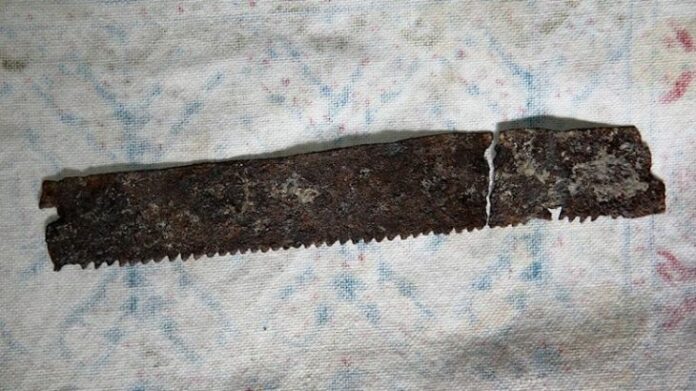In the heart of Anatolia, a groundbreaking discovery has been made that sheds new light on ancient craftsmanship. Archaeologists, during their excavations in Çorum, the capital of the Ancient Hittite Empire in northern Turkey, unearthed a 2,250-year-old saw. This find, described as the first of its kind, provides a unique glimpse into the tools used during the late Bronze Age and the Galatian period.
Hattusha: A Historical Treasure

Hattusha, the ancient capital city of the Hittite Empire, is a site of immense archaeological significance. Designated a UNESCO World Heritage Site in 1986, Hattusha played a crucial role in the Near East during the late Bronze Age, approximately 1600-1180 BCE. The city is renowned for its sophisticated urban planning, well-preserved buildings including temples, royal palaces, and fortifications, as well as its intricately decorated Lions’ Gate and Royal Gate. Additionally, Hattusha is famous for the rock art at Yazilikaya and its cuneiform scripts, which are the oldest known form of Indo-European languages and have earned the city the title of “Memory of the World” since 2001.
The Remarkable Discovery

The recent excavation led by Professor Andreas Schachner from the German Archaeological Institute has enriched the historical tapestry of Hattusha. Among the myriad artifacts unearthed, the discovery of a 2,250-year-old saw stands out. This ancient tool, measuring approximately 20 centimeters in length, was found on the northwestern slope of the large castle area of the ancient city. The iron of the saw is thicker compared to contemporary saws, yet its design is strikingly similar to those used today.
Insights from the Excavation
Professor Schachner, in an interview with Anadolu Agency (AA), highlighted the rarity and significance of this find. He explained that the saw dates back to the 3rd century B.C., marking it as the first of its kind discovered in Anatolia. The saw was found in a building from the Galatian period, which corresponds to roughly 2,250 years ago. Such finds are rare, with few examples from the later Roman periods and none previously from the 3rd century B.C. in Anatolia.

“As far as we can tell from the holes on both sides of the saw, we think that it had a semicircular handle,” Professor Schachner noted. “Thus, the carpenter of the period may have used the saw by holding it from the wood and moving it.” This insight provides a fascinating glimpse into the woodworking techniques of ancient craftsmen.
Hattusha: An Outdoor Museum
Hattusha functions as an outdoor museum, offering visitors a chance to explore its historical and cultural heritage. The city’s ruins, including temples, royal palaces, and fortifications, provide a tangible connection to the past. The elaborate decoration of the Lions’ Gate and the Royal Gate, along with the rock art at Yazilikaya, highlights the artistic and architectural achievements of the Hittite Empire.
Conclusion
The discovery of the 2,250-year-old saw in Hattusha is a testament to the advanced craftsmanship of ancient civilizations. This rare find not only enriches our understanding of the tools used during the late Bronze Age and Galatian period but also underscores the historical significance of Hattusha as a center of cultural and technological innovation. As excavations continue, Hattusha promises to reveal even more secrets of its storied past, further illuminating the rich tapestry of human history.
